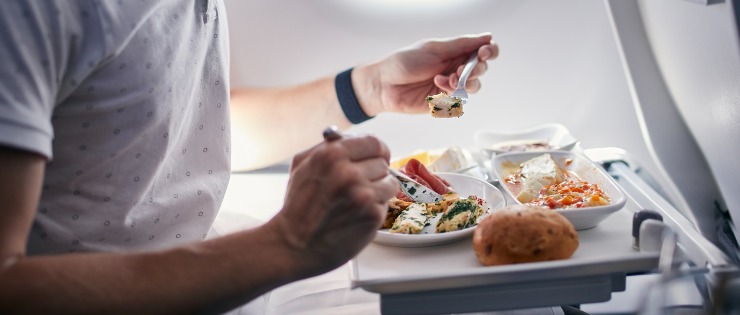
In flight dining has been the subject of numerous myths and misconceptions over the years. And whilst decreasing leg room, overcrowding and delays have copped increasing amounts of ire from travellers of late, plane food has remained a constant mystery and frustration to frequent flyers.
While there have been historical complaints about the taste and quality of plane food, many airlines have had a crack at making significant improvements in recent years. Some carriers even collaborate with renowned chefs to design their menus, offering a surprisingly enjoyable dining experience.
Plane food also has a reputation for being high in calories, salt, and fat. While certain meals might be less healthy than others, many airlines now offer healthier meal options, such as vegetarian or low-calorie choices, to cater to passengers' preferences.
In recent times, airlines have also become more attentive to passenger preferences and dietary requirements, and they strive to enhance the overall in-flight dining experience to dispel these myths. However, as with any subjective matter, individual experiences with plane food can vary, and plane food has well and truly earned its reputation as one of the worst dining experiences on (or above) Earth. At the end of the day, there’s nothing overly appetising about mushy sandwiches, powdered eggs, and mystery meat masquerading as lamb.
Admittedly, it’s a tough ask to feed 250 passengers both nutritious and tasty meals at altitude, cooked in a kitchen the size of a cupboard, mostly comprised of pre-cooked and dehydrated pre-packaged meals. Each airline has its own catering and menu selection process, leading to variations in the quality and variety of in-flight meals. Premium carriers often provide a more extensive selection of dishes, including regional and international cuisines.
Unfortunately for our taste buds, the cooking techniques and practices necessary for a great feed pose a safety hazard in the sky. Ovens can’t be on during turbulence, hot water tanks are rarely cleaned in planes, and the quality of the ingredients can be questionable at best.
According to Fritz Gross, Director of Culinary Excellence at LSG Sky Chefs Asia Pacific, there are two meals that airlines can’t get wrong with the resources available: stew and fried rice.
Stew is always stew Gross explains. “We can simmer it and reheat it over and over and it will still be a stew,” he told CNN1. His assessment of fried rice is much the same, explaining that it’s difficult to substitute the ingredients involved with a cheaper, longer-life alternative.
Gross also suggests sticking to cold, pre-packaged drinks whenever possible, confirming that the hot water tanks used in making tea and coffee never reach boiling and are cleaned very rarely.
Aside from these suggestions, to ensure the plane meal you’re getting is 100 per safe to eat, the advice is to steer clear of steak, fish and chicken. Pasta is also on the naughty list according to Gross, but more for taste reasons. According to the expert, pasta needs to be cooked al dente in order for it to taste any good.
Some travellers avoid plane food entirely, thinking it's better to bring their own snacks or meals. While packing some snacks is a good idea for longer flights, following these suggestions means that airline meals are generally safe to eat, and trying the in-flight food can be part of the overall travel experience. For better or worse.
If stew isn’t your thing, we suggest playing to safe and stocking up on snacks before boarding! Peanut M&M’s have never led us astray.